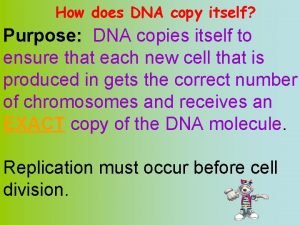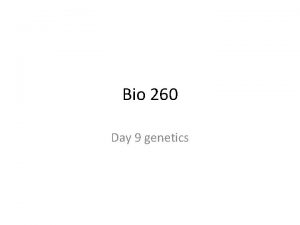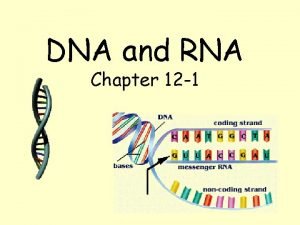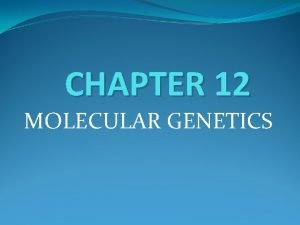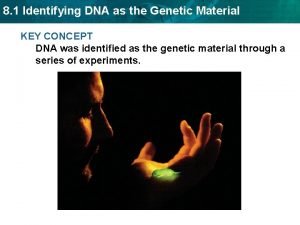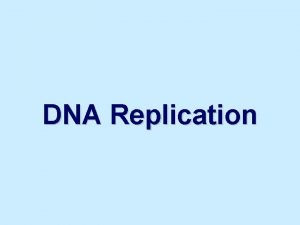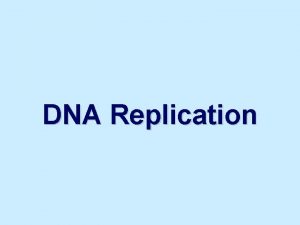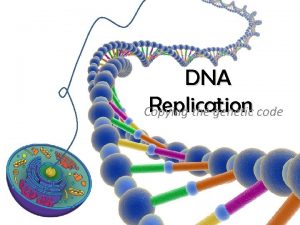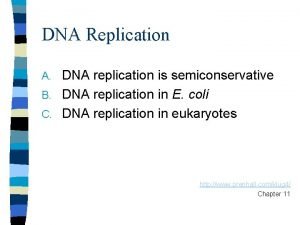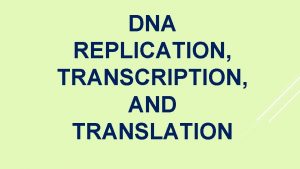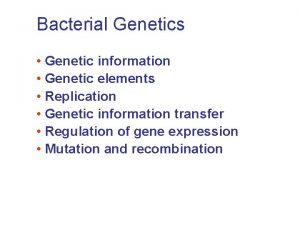DNA Replication Replication copies the genetic information A















- Slides: 15

DNA Replication

Replication copies the genetic information. • A single strand of DNA serves as a template for a new strand. • DNA is replicated during the S (synthesis) stage of the cell cycle. • Each body cell gets a complete set of identical DNA.

DNA Replication • Origins of replication 1. Replication Forks: Forks hundreds of Y-shaped regions of replicating DNA molecules where new strands are growing. 5’ Parental DNA Molecule 3’ 3’ Replication Fork 5’

DNA Replication • Origins of replication 2. Replication Bubbles: Bubbles a. Hundreds of replicating bubbles (Eukaryotes) b. Single replication fork (bacteria). Bubbles

Replication is fast and accurate. • DNA replication starts at many points in eukaryotic chromosomes. There are many origins of replication in eukaryotic chromosomes. • DNA polymerases can find and correct errors.

DNA Replication • Strand Separation: Separation 1. Helicase: Helicase enzyme which catalyze the unwinding and separation (breaking HBonds) of the parental double helix. 2. Single-Strand Binding Proteins: Proteins proteins which attach and help keep the separated strands apart.

DNA Replication • Synthesis of the new DNA Strands: 1. DNA Polymerase: Polymerase DNA Polymerase (enzyme) catalyze the synthesis of a new DNA strand in the 5’ to 3’ direction 5’ 3’ Nucleotide DNA Polymerase RNA Primer 5’

DNA Replication 2. Leading Strand: Strand synthesized as a single polymer in the 5’ to 3’ direction 5’ 3’ 5’ Nucleotides DNA Polymerase RNA Primer

Replication: 2 nd step § Build daughter DNA strand add new complementary bases u __________ u DNA Polymerase III

DNA Replication 3. Lagging Strand: Strand also synthesized in the 5’ to 3’ direction, direction but discontinuously against overall direction of replication. Leading Strand 5’ 3’ DNA Polymerase RNA Primer 3’ 5’ 5’ 3’ 3’ 5’ Lagging Strand

DNA Replication 4. Okazaki Fragments: Fragments series of short segments on the lagging strand. DNA Polymerase Okazaki Fragment RNA Primer 5’ 3’ Lagging Strand 3’ 5’

DNA Replication 5. DNA ligase: ligase a linking enzyme that catalyzes the formation of a covalent bond from the 3’ to 5’ end of joining stands. Example: joining two Okazaki fragments together. DNA ligase 5’ 3’ Okazaki Fragment 1 Lagging Strand Okazaki Fragment 2 3’ 5’

5 3 ligase energy 3 5

Question: • What would be the complementary DNA strand for the following DNA sequence? DNA 5’-GCGTATG-3’

Answer: DNA 5’-GCGTATG-3’ DNA 3’-CGCATAC-5’
 Bioflix activity dna replication dna replication diagram
Bioflix activity dna replication dna replication diagram Dna polymerase function in dna replication
Dna polymerase function in dna replication Dna rna protein synthesis homework #2 dna replication
Dna rna protein synthesis homework #2 dna replication How does dna copy itself
How does dna copy itself Copies of dna
Copies of dna Founder effect
Founder effect Genetic programming vs genetic algorithm
Genetic programming vs genetic algorithm Genetic programming vs genetic algorithm
Genetic programming vs genetic algorithm What is gene flow and genetic drift
What is gene flow and genetic drift Gene flow vs genetic drift
Gene flow vs genetic drift Molecular genetics section 1 dna the genetic material
Molecular genetics section 1 dna the genetic material Chapter 12 section 1 dna the genetic material
Chapter 12 section 1 dna the genetic material Chapter 12 molecular genetics
Chapter 12 molecular genetics On and off
On and off Chapter 12 section 1 dna the genetic material
Chapter 12 section 1 dna the genetic material Section 1 identifying dna as the genetic material
Section 1 identifying dna as the genetic material



